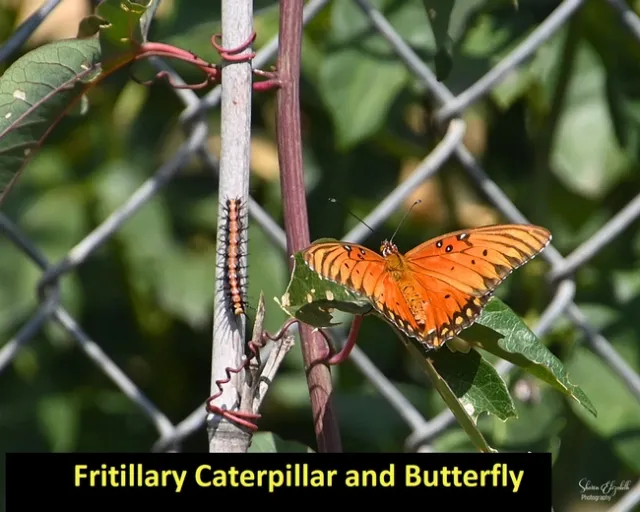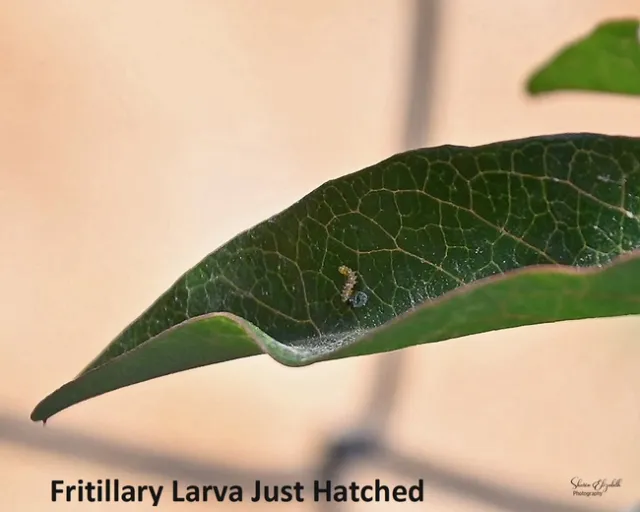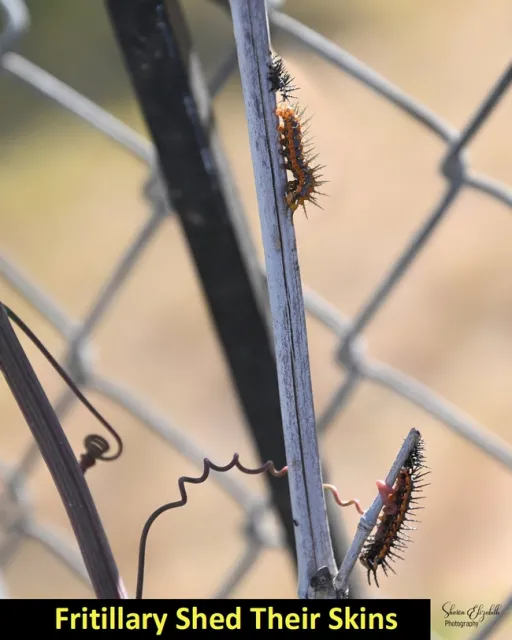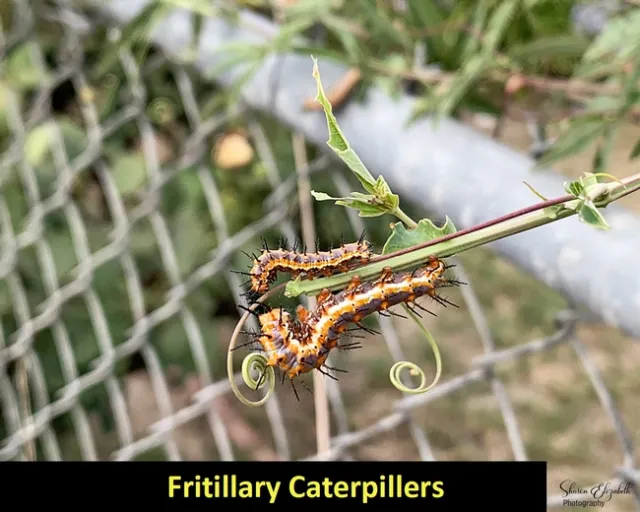Who loves seeing butterflies in the garden? The Gulf Fritillary Butterfly range in the U.S. is wide. From North Carolina to Florida and the Southern states to the Midwest and into California. It was first seen and recorded in the Bay area in 1908.
There are 14 species of greater fritillaries (genus Speyeria) and 16 lesser fritillaries (genus Bolloria). Many are orange and black with checkered patterns. The gulf fritillary (Agraulis vanilla), are bright orange above with black marking and has 3 white spots with black margins, on the leading edge of their forewing. The underside of their wing is brown with elongated, iridescent silver spots. The female fritillary has heavier black lines and are larger than the male.

They were part of the Heliconiidae subfamily. The Heliconiidae have long, narrow wings compared to other butterflies and are commonly called longwing or passion butterflies.
Longwing butterflies love to sip the nectar from Zinnia, Aster, Verbena, Lantana, Butterfly Bush (Buddleja spp.), Tickseed (Bidens spp.), Thistle (Cirsium spp.), Black-eyed Susan (Rudbeckia spp.) and Clover (Trifolium spp.).

Its host plant is the Passion Vine (Passiflora spp.). The female fritillary will have several broods of eggs from spring to fall. She will deposit eggs which are yellow and shaped like small pyramids, on various parts of the passion vine. The egg stage is completed in 4-8 days.
The caterpillars (larva) are shiny orange with black spines, and grow very quickly. The fritillary larvae will hang around munching on the passion vine for 2-3 weeks, and then go off to chrysalis. The chrysalis (pupa) will look like dead leaves and requires 5-10 days to pupate. The new butterflies will emerge and live for 4-6 weeks in warm weather.

Their habitat is open, sunny places. Fritillary like gardens, the edge of the woodlands, parks, roadsides and open fields. Many birds will not eat the Gulf Fritillary butterfly because they are orange (meaning danger), the host plant is the Passion Vine (the roots of the Passion vine are poisonous), and the poison can stay in the butterfly's system.

Butterflies receive most of their nutrition, protein, salt and amino acids from mud. To create a butterfly drinking station, take a clean, clay saucer, put some dirt in it and enough water to make some mud, add a couple of medium rocks for them to perch on. Place the saucer in a sunny location. The Fritillary will be very happy in their new habitat.
All pictures are copyrighted by Sharon Elizabeth Photography
Thank you Sharon Yocum, my sister and fellow Master Gardener for the beautiful pictures!

